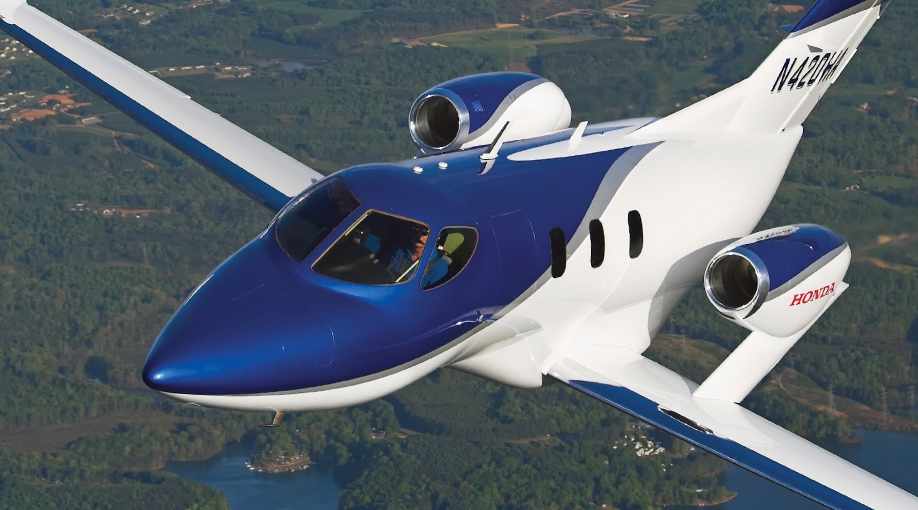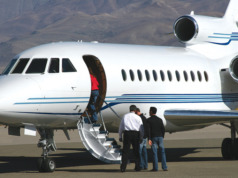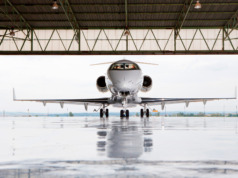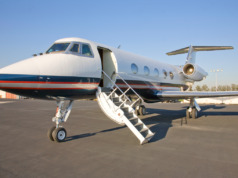
Unless you are a financial executive, you may not be familiar with the basic terms of financial and tax accounting as they relate to your flight department. Below is a short guide to some of these terms:
Financial Depreciation, or Book Depreciation, is a system to distribute the cost or other basic value of tangible assets, in this case your aircraft, less any residual value, over the estimated useful life of the asset in a systematic, rational way. Straight line depreciation is the most widely used method. Ten years is a common, though not the only, “estimated useful life” for aircraft for financial accounting purposes:
$2,200,000 (acquisition cost) – $200,000 (residual value) =
$2,000,000 (available depreciation)
$2,000,000/10 (useful life) =
$200,000 (per year depreciation expense for 10 years)
Market Depreciation is a widely changing variable based on the value of the aircraft in the marketplace. Market depreciation percentages are based on historical residual values. The exact value of an aircraft is unknown until it is sold, so until the sale, market depreciation is only an estimate. Prior to the recent recession, residual values declined by 3%-4% per year for jets. The difference between retail value and wholesale value was insignificant because of the high demand.
However, there is a big difference post-recession. The residual value (with no inflation) for new aircraft is, on average, 76% of purchase price during the first year. It drops an average of 6% per year thereafter. While the first-year drop on a used aircraft is not quite as significant, much larger drops during the second or third year often bring the residual value percentage in line with that of a new aircraft.
Tax Depreciation is the annual deduction allowed to recover the cost or other basis of business property with a useful life of more than one year. The Modified Accelerated Cost Recovery System (MACRS) is mandatory for most tangible depreciable property placed in service after December 31, 1986. Property is depreciable if it wears out, has a determinable life that exceeds one year, and is used in a trade or business or for the production of income. Aircraft used primarily for commercial (Part 135 charter) purposes are depreciated over seven years. Non-commercial (Part 91) aircraft, and all helicopters, are depreciated over a five year period. Depreciation deductions reduce the tax basis on a dollar-for-dollar basis until the basis has been reduced to zero. Depreciation deductions are allowed only on the business use of an aircraft, which are: A business aircraft owner is allowed an annual deduction on its income tax return for depreciation business aircraft that are used in a “trade or business” and are subject to “exhaustion, wear and tear, and obsolescence” over time (IRC §167).
Aircraft costs directly associated with flying are divided into two categories: variable and fixed. For example, fuel costs vary in direct proportion to the number of flight hours, as do the costs for engine maintenance programs, landing fees, catering, crew expenses, etc. Fixed costs do not depend on the number of hours flown, and include, for example: insurance, training, crew salaries, and hangar and management fees.
Other Costs are those associated with the ownership and operation of an aircraft, such as taxes, interest, lease payments, depreciation, etc.
The Chart of Accounts is a list of accounts used to categorize all expenditures for accounting purposes. At the company level this may just be 1 line titled — Aviation Department. It may be up to you to show where all the money is spent.
While the recent recession did not change the tax laws, it may have affected your aircraft’s anticipated residual value. Be sure to review your own depreciation schedules — and adjust your tax planning expectations accordingly. BAA
Nel Stubbs, VP Conklin & de Decker, a JSSI company, has been advising aircraft owners and companies on aviation tax issues for 30 years. She holds a BS in Mathematics and a MS in Aeronautical Science.




